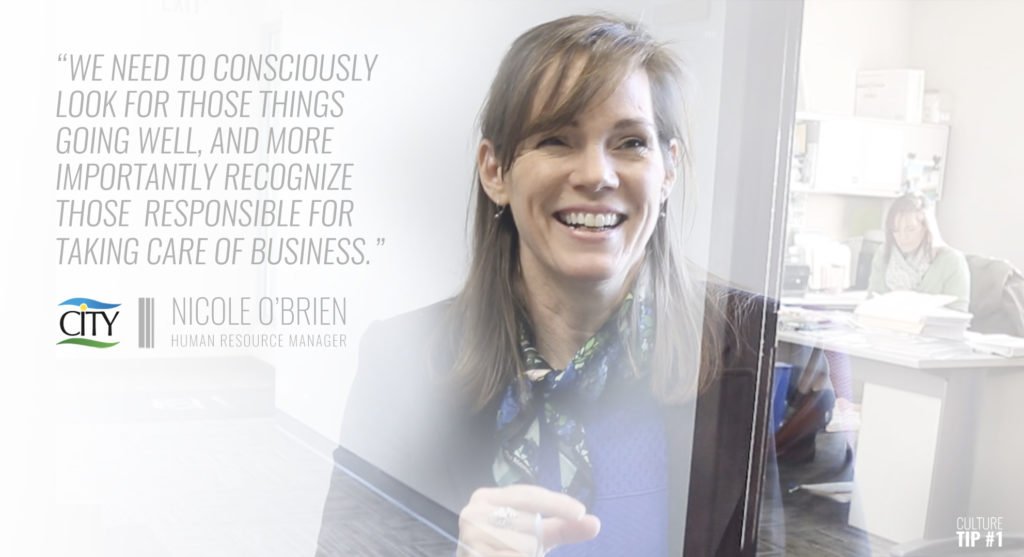The WHYs and HOWs of Employee Recognition | Culture Tip #1
Prioritizing employee recognition can be a challenge in the frenetic pace of today’s business world. Technology allows us to be plugged in to work 24/7. As the flow of information cascades into our present reality, inevitably a percentage of those communications we receive will contain challenges we’re responsible for resolving. How do we make time for employee recognition and should it really be a priority in the midst of our daily chaos?
Research would confirm a resounding YES to the importance of employee recognition. In fact, one could argue that there are few things that could proportionately provide the most bang for the buck in terms of time investment vs. return in the form of increased productivity and performance.
A February 2016 field study by Bradler, Dur, Neckermann and Non found that “recognition increases subsequent performance substantially, and particularly when recognition is exclusively provided to the best performers.” This research team further discovered that promoted recognition not only improved performance metrics from those being recognized, but also increased performance in those who observe the recognition, experiencing pressure to conform. It turns out that subjects adjust their performance to what they perceive to be average performance. But when recognition is publicly lavished upon top performers, their performance is raised from below average to performance more in line with the averages around them.
It’s easy to get distracted by the problems that we are confronted with each day which certainly need to be addressed, but we need to guard against letting those issues blind us to the far more numerous matters that are going right. Like attracts like, so our negative thoughts about irritating problems tend to predispose us to notice other problems rather than those things that are going right. This incidentally prevents us from problem solving successfully.
To guard against this human tendency, we need to consciously look for those things going well, and more importantly recognize those co-workers responsible for taking care of business and those that do their part to keep the myriad of potential problems off your radar.
Here’s the WHY:
Recognized employees are happy employees. When you show your employees that you see and appreciate their efforts — and take the time to demonstrate how much of a measurable impact they’re having on your business and your corner of the world — those employees feel good about what they do and they take those feelings home. Additionally, happy employees are on average 12 percent more productive than their less-happy counterparts.
If that isn’t enough reason all by itself, read on…
Appreciative leaders are appreciated leaders. One could write a hundred pages about why trust in the workplace is critical and it still wouldn’t be enough. So let’s say it again: Trusting one another is one of the most valuable commodities we possess. Where trust is concerned — sometimes all you have to do is build a solid foundation for it to thrive. In our case today, that foundation is appreciation. You’d be surprised by the degree to which simply thanking your employees fosters an atmosphere of trust. When employees know their efforts contribute to a cause and are noticed by people higher up the food chain, they feel a deeper connection to leadership. Nearly 90 percent of employees who received recognition or thanks from their boss in the past month indicated higher levels of trust in that boss. Among employees who received no recognition, only 48 percent indicated they trusted their higher-ups.
But WAIT- there’s MORE…
When employees feel recognized, they stick around. For our third and final defense of employee recognition, let’s consider the costs of training a brand-new employee to the point where they can work as confidently and as efficiently as a company veteran. When asked why they decided to switch to a different career, the vast majority of employees represented in a recent U.S. Bureau of Labor and Statistics report indicated they felt either a lack of respect or a lack of autonomy. With a little bit of recognition, you can reverse these trends and keep your talent around for much longer.
(Adapted from Forbes article “3 Reasons Why Employee Recognition will Always Matter” by William Craig, July 17, 2017.)
Hopefully you’re now convinced of the importance of prioritizing employee recognition, but how does one make time for it in the midst of a busy schedule? Employee recognition really doesn’t need to take all that much time. The steps below are an effective way to acknowledge and reinforce desired behavior, but it doesn’t need to take more than a literal minute. Simply acknowledge, thank, and clarify “why” the behavior is valuable to you and the organization.
Here’s a simple formula for recognizing an individual’s effort:
- Thank the person by name.
- Specifically state what they did that is being recognized. It is vital to be specific because it identifies and reinforces the desired behavior.
- Explain how the behavior made you feel (assuming you felt some pride or respect for their accomplishment).
- Point out the value added to the team or organization by the behavior.
- Thank the person again by name for their contribution.
(Excerpt from https://cuttingedgepr.com/free-articles/employee-recognition-important/)
Employee recognition doesn’t need to be costly or time consuming. In fact, the most impactful recognition is simple, and costs no more than a minute of your time. A recent Gallup Workplace survey revealed that employees recalled the most meaningful and memorable recognition as coming most often from an employee’s manager (28 percent) or a high-level leader or CEO (24 percent).
Verbal recognition is free, yet has an immediate and extremely effective return on your minimal investment of time. Just make sure it is sincere, timely, public, and clearly spells out the why of the impact for the organization. Employee recognition translates to results. Try putting some recognition to work in your organization today.
Article By Nicole O’Brien, Human Resources Manager

Comments
Comments are closed.